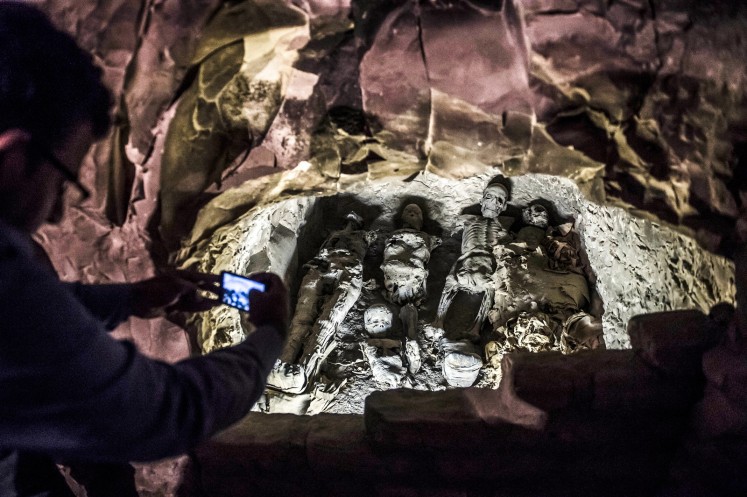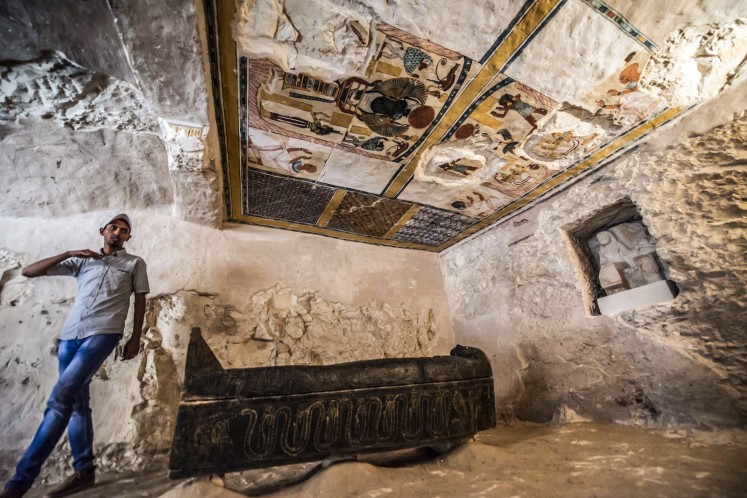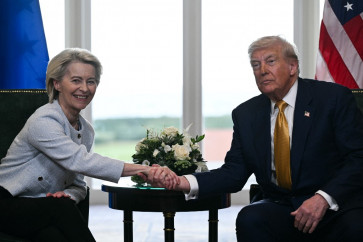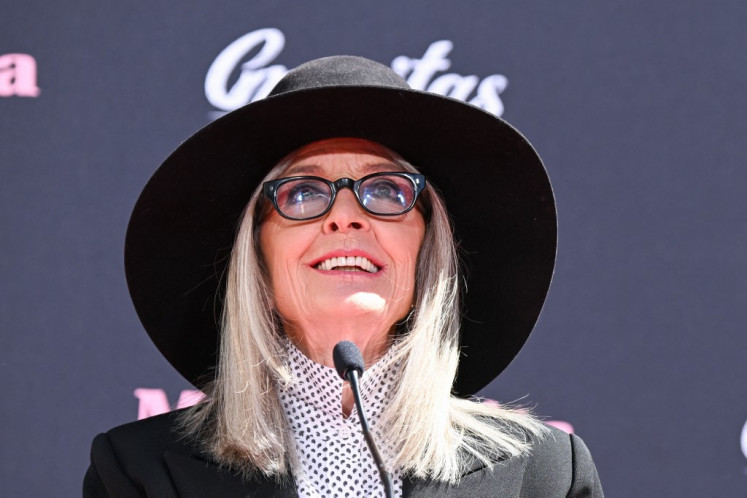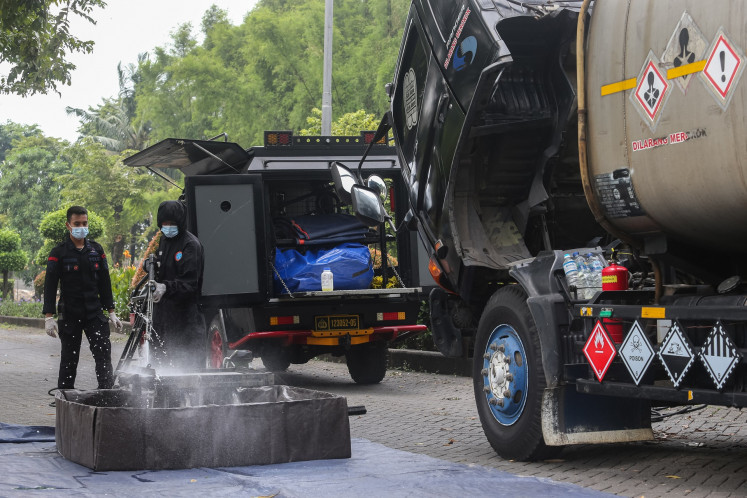Popular Reads
Top Results
Can't find what you're looking for?
View all search resultsPopular Reads
Top Results
Can't find what you're looking for?
View all search resultsEgypt unveils ancient tomb and sarcophagi in Luxor
Change text size
Gift Premium Articles
to Anyone
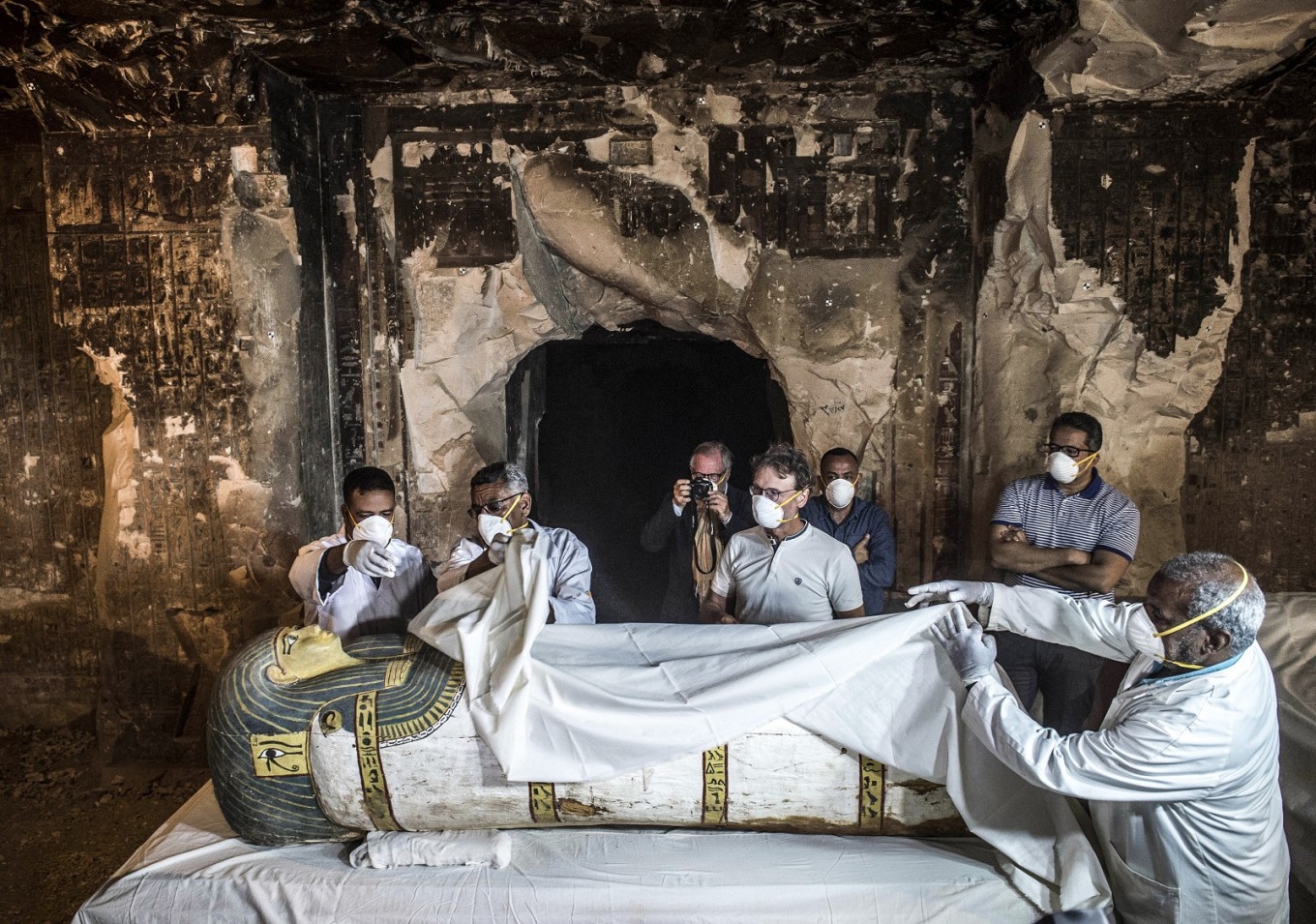 Egypt's Antiquities Minister Khaled el-Enany (R) and Mostafa Waziri (2nd-R, behind), the Secretary General of the Supreme Council of Antiquities, inspect an intact sarcophagus during its opening at the site of Tomb TT33 at Al-Assasif necropolis on the west bank of the Nile north of the southern Egyptian city of Luxor on November 24, 2018, after it was discovered earlier this month by a French mission. Located between the royal tombs at the Valley of the Queens and the Valley of the Kings, the Al-Assasif necropolis is the burial site of nobles and senior officials close to the pharaohs. (AFP/Khaled Desouki)
Egypt's Antiquities Minister Khaled el-Enany (R) and Mostafa Waziri (2nd-R, behind), the Secretary General of the Supreme Council of Antiquities, inspect an intact sarcophagus during its opening at the site of Tomb TT33 at Al-Assasif necropolis on the west bank of the Nile north of the southern Egyptian city of Luxor on November 24, 2018, after it was discovered earlier this month by a French mission. Located between the royal tombs at the Valley of the Queens and the Valley of the Kings, the Al-Assasif necropolis is the burial site of nobles and senior officials close to the pharaohs. (AFP/Khaled Desouki)
E
gypt on Saturday unveiled an ancient tomb, sarcophagi and funerary artifacts discovered in the Theban necropolis of Al-Assasif in the southern city of Luxor.
In a ceremony in front of the temple of Queen Hatshepsut, Antiquities Minister Khaled al-Anani announced that French and Egyptian archaeologists had discovered "a new tomb... with very nice paintings".
Located between the royal tombs at the Valley of the Queens and the Valley of the Kings, the Al-Assasif necropolis is the burial site of nobles and senior officials close to the pharaohs.
Among the finds in the tomb are sarcophagi, statues and some 1,000 funerary figurines called "Ushabtis" made of wood, faience and clay.
This picture taken on November 24, 2018 shows a man using a cell phone to take a picture of a group of mummies stacked together at the site of Tomb TT28, which was discovered by an Egyptian archaelogical mission at Al-Assasif necropolis on the west bank of the Nile north of the southern Egyptian city of Luxor. Located between the royal tombs at the Valley of the Queens and the Valley of the Kings, the Al-Assasif necropolis is the burial site of nobles and senior officials close to the pharaohs. (AFP/Khaled Desouki)The tomb dates back to the Middle Kingdom, which spanned the 11th and 12th dynasties, and belonged to "Thaw-Irkhet-If", mummification supervisor at the Temple of Mut in Karnak, according to the ministry.
Separately, archeologists from the French Institute of Eastern Archeology (IFAO) and the University of Strasbourg have discovered two sarcophagi dating back to the 18th dynasty, Anani told a news conference.
One of the two contains the "well-preserved" mummified remains of a woman named Thuya, the antiquities ministry said in a statement.
But ministry spokeswoman Nevine Aref told AFP later that work was still ongoing to definitively identify the name of the mummy.
This picture taken on November 24, 2018 shows a carved black wooden sarcophagus inlaid with gilded sheets, dating to Egypt's Late period (7th-4th century BC), lying in a burial chamber decorated with colored scenes depicting the owner with members of his family, discovered by an Egyptian archaelogical mission at the site of Tomb TT28 at Al-Assasif necropolis on the west bank of the Nile north of the southern Egyptian city of Luxor. Located between the royal tombs at the Valley of the Queens and the Valley of the Kings, the Al-Assasif necropolis is the burial site of nobles and senior officials close to the pharaohs. (AFP/Khaled Desouki)Egyptian authorities regularly announce archaeological discoveries with great fanfare, although the country is often accused of a lack of scientific rigour and neglect of its antiquities.
Archaeological sites, particularly in Luxor, make Egypt a major draw for foreign tourists.
Hit by the turmoil that enveloped Egypt after the 2011 uprising that ousted longtime president Hosni Mubarak, the tourism sector has picked up this year.


